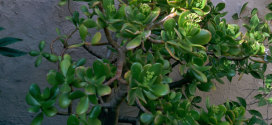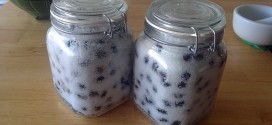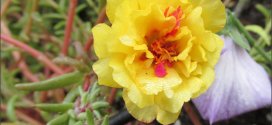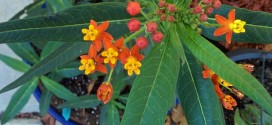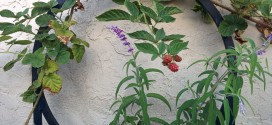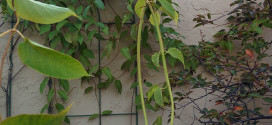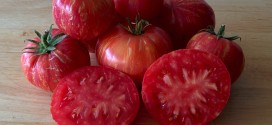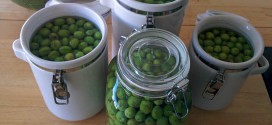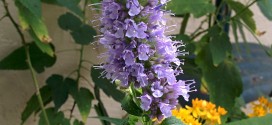Jade Plant (aka Jade Tree, Money Tree) is a great landscape plant for the Sunnyvale garden. It is a succulent that needs little watering.
Read More »admin
Dry-curing olives (Part 1)
In October 2015, I harvested around 4 gallons of Mission olives. Most of them I brine-cured. The ripe olives I am dry-curing using just coarse kosher salt. Why not use regular salt? Because dry-cured olives are very salty and regular table-salt contains iodine (to prevent iodine deficiency) and too much of a good thing is bad. I am dry-curing them …
Read More »Purslane
Common in our Sunnyvale yards but little known in the North American kitchen, purslane is both delicious and exceptionally nutritious. Common purslane (Portulaca oleracea) — also known as duckweed, fatweed, pursley, pussley, verdolagas and wild portulaca — is the most frequently reported “weed” species in the world. It can grow anywhere that has at least a two-month growing season. My …
Read More »Blood Flower – Aclepias curassavica
Blood flowers (Aclepias curassavica) are red-orange with yellow hoods. Flowering continues throughout the summer to early autumn. Hummingbirds, butterflies and bees are attracted to the flowers. Monarch butterflies lay eggs on this plant and the resulting larvae (caterpillars) use the plant leaves as a food source. Flowers are followed by long, narrow seed pods (3-4” long) which split open when …
Read More »Marionberries in October
Here it is Oct 8 and our Marionberry is still producing fruit. It had its usual big harvest in late June. Then a smaller harvest in August. And now there are still ripe berries. The Marionberry is a bright, glossy blackberry with medium to large fruit, somewhat longer than wide. It is special to the area because it is named …
Read More »Mystery vine seed pod
I thought this was a potato vine, but now I am not sure. Potato vines have dark fruit. This vine has white flowers in spring and summer. But the seed pod(s) are about twelve inches long and joined at the bottom. During the summer, I am distracted with other flowers and did not notice the growth pattern of the pods.
Read More »Canna Lily
The canna lily plant is a rhizomatous perennial with tropical-like foliage and large flowers that resemble that of iris. Canna lilies are low maintenance and easy to grow, and both their flowers and foliage offer long-lasting color in the garden. Flower color may be red, orange or yellow. Depending on the variety, foliage color varies from green to maroon, bronze, …
Read More »Herd of Red Zebras
The Red Zebra tomato was the most productive plant in our Sunnyvale garden for 2015. it produced many fruit in the 6 to 8 ounce range. The tomato is meaty with few seeds.
Read More »Brine-curing Your Own Olives
I decided that 2015 was the year to home-cure olives. I visited my parent’s home in Almaden Valley in south Santa Clara County. Their neighbor has a large Mission olive tree that generously drapes over the fence. Olives cannot be consumed without curing. All olives contain oleuropein, a glucoside compound, that tastes very bitter. You have to cure them using …
Read More »Agastache ‘Black Adder’
Okay. I bought this plant because of its name. There were no photos of the flowers; the plant was not yet in bloom. I just loved the 1980s BBC four-year series starring Rowan Atkinson (as Edmund Blackadder) and Tony Robinson (as Baldrick). When the plant finally bloomed last week, I was pleasantly surprised by its purple flower stalk. But, as …
Read More »